At Home with Sense and Sensibility, by Lizzie Dunford
Every time I re-read Sense and Sensibility, I am struck again by its precocious brilliance. So established is Austen within the canon of the literary greats and so immeasurably vast is her influence, it is easy to forget that she was once a debut author, anxiously awaiting the public reaction to her first novel—Sense and Sensibility.
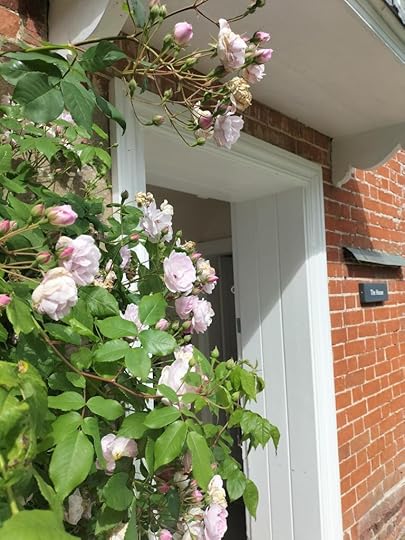
(From Sarah: This is the seventh guest post in “A Summer Party for Sense and Sensibility,” which began on June 20th and will continue through to the end of the summer. You can find all the contributions to the blog series here . I hope you’ll join the conversations about S&S in the comments here and on social media: #senseandsensibilitysummer. Thanks for celebrating Jane Austen’s first published novel with us!)
In a letter of Thursday 25th April 1811 to her sister Cassandra, Jane Austen wrote: “No indeed, I am never too busy to think of S&S. I can no more forget it, than a mother can forget her sucking child.” This would not be the last reference to her books as being her offspring; in January 1813, she described the newly published Pride and Prejudice as her “darling Child” (28 January 1813)—a powerful and important reminder that the life of this famously unmarried author was anything but barren.
If to all authors their books are children, then Austen’s novels are prodigies—innovative, progressive and era-defining. As the first of her brood of prodigies Sense and Sensibility holds a special place in our understanding of both Austen the writer and Austen the woman. It also has a deep significance to the history of the home that is now Jane Austen’s House.
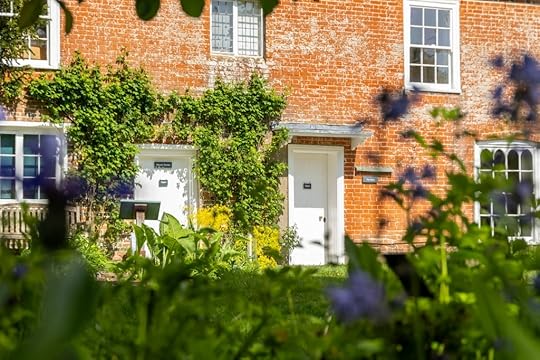
The first draft of what would become Sense and Sensibility belonged to the Steventon years and was part of the culmination of an apprenticeship in creative writing that had begun before Austen reached her teenage years. Later, the draft of Elinor and Marianne was part of the package of manuscripts that accompanied Austen as she moved from Steventon to Bath to Southampton to Chawton, during those peripatetic eight years that were so crucial in shaping the author who would emerge once she returned to Hampshire. It is difficult for me to be objective in assessing the significance of the move to a permanent secure home to Austen’s writing, but what is inarguable is that the Chawton years were the most productive and creative of her life. After over a decade in draft form, within eighteen months of moving to Chawton Cottage, the finished version of Sense and Sensibility was on booksellers’ shelves, with its siblings to follow in quick succession over the next six years.

Contained with the pages of Sense and Sensibility is one of the very few definite links between Austen’s lived experience and her literary creations, and it is, perhaps inevitably, connected to the home she and the women that surrounded her made in Chawton.
All of Austen’s novels are centred on the need of her young female characters to find a safe and secure home; in her contemporary context this was most easily, and most acceptably, achieved through marriage. This circumstance has all too frequently led to her books being read as pure romances (and her male leads as pure romantic heroes); a reading that misses a deep cynicism and critique of the double standards of her age. One of these double standards, and indeed double perceptions—is the imbalance between gender and the domestic. Women belong to the home, but the house belongs to men.
Nowhere in Austen’s novels is this female precarity more powerfully documented than in Sense and Sensibility. At the death of her husband, the second Mrs. Dashwood is evicted from her home to make way for her stepson and his fabulously manipulative wife. I know that I will not be alone in a series celebrating Sense and Sensibility, in championing the scene in which Mrs. Fanny Dashwood manipulates her husband into reducing his financial support for his step-family as one of the most masterful in all of English Literature (is this an opportune time to once again raise the fact that this is a debut novel?).

Norland Park might have been Mrs. Dashwood’s home, but it was never her house. In the same way, whilst Elizabeth Darcy might be mistress of Pemberley, she will never own it; that privilege will remain with her husband, and then, one assumes, her son. After their eviction the Dashwood women find refuge in a cottage provided by their generous and gregarious distant relation Sir John Middleton. Barton Cottage is in the depths of the rolling Devonshire hills; its rural and remote setting being critical to the Romantic plotline of the disastrous relationship between Marianne and Willoughby.
Austen had taken several holidays to Devon, and yet, when she was looking for a model for Barton Cottage, she chose much closer to home, creating in her description of the place (and it is an unusually detailed description for Austen) a portrait of the house that had become home in July 1809. Like Barton Cottage, Jane Austen’s House also has a “narrow passage . . . [leading] directly through the house into the garden behind” (Volume 1, Chapter 6). It also has two rooms, about sixteen feet square either side of this corridor, and four bedrooms and two garrets above. This description comes at the start of Chapter 6, a chapter full of a sense of both homesickness and homecoming as we see the Dashwood women arriving at and settling into the cottage.
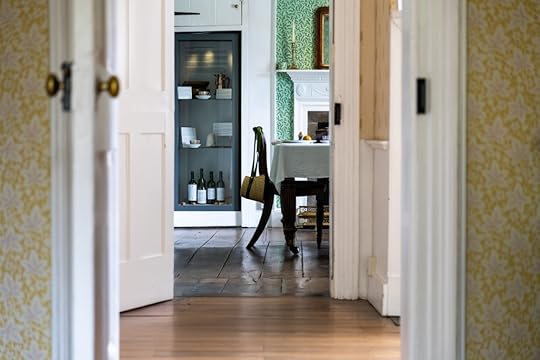
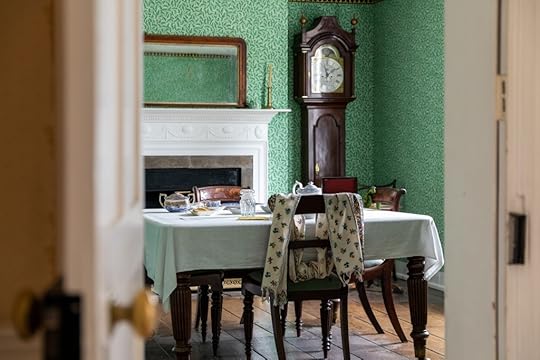
“. . . each of them was busy in arranging their particular concerns, and endeavouring, by placing around them their books and other possessions, to form themselves a home. Marianne’s pianoforte was unpacked and properly disposed of; and Elinor’s drawings were affixed to the walls of their sitting room.” (Volume 1, Chapter 6)
For me this is one of the most poignant passages in the novel, and one that I believe offers an insight into the experiences and feelings of the Austen women during their peripatetic existence prior to moving to Chawton. It has also directly influenced how we have presented the house. Today Cassandra’s drawings hang above a pianoforte, that whilst it isn’t Jane’s, which has been lost to history, is very similar to that which she played.
This also means that today, whilst you can only visit the screen versions of Pemberley, Kellynch Hall and all the rest, you can actually visit the “real” Barton Cottage, and follow in the footsteps not just of Elinor and Marianne, but also of Austen the debut author, as she put the finishing touches to her manuscript, and then awaited its return as an actual book; the first of those precious children to be born from that special house.
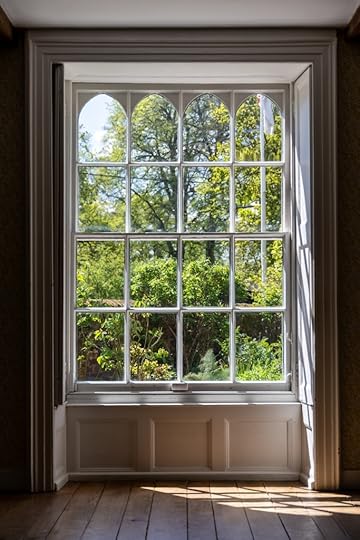
Quotations are from the Macmillan Collector’s Library edition of Sense and Sensibility (2023), and the Oxford edition of Jane Austen’s Letters, edited by Deirdre Le Faye (3rd Edition, 1997). The photos of Jane Austen’s House are by Luke Shears and the photo of Sense and Sensibility is by Peter Smith, all included here courtesy of Jane Austen’s House.
An avid reader from a young age, Lizzie Dunford has spent her career working in and caring for writers’ houses and historic house museums. She is a dedicated exponent of the power of storytelling through objects and space and has been Director of Jane Austen’s House since 2020. She writes and presents regularly on Austen and literary houses, and can usually be found, when not at JAH, in the shed at the top of her wilderness of a garden attempting to put her own pen to paper.
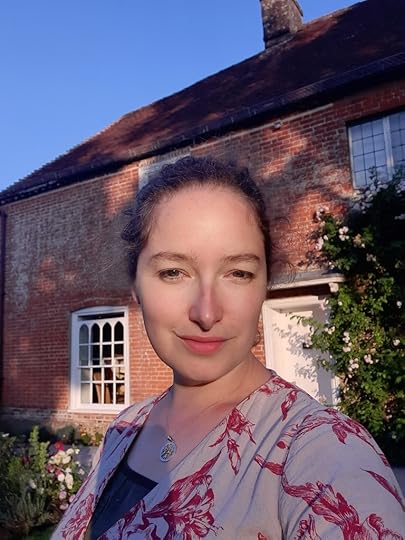
If you enjoyed this post, I hope you’ll consider recommending it to a friend. If you aren’t yet a subscriber, please sign up to receive future guest posts in “A Summer Party for Sense and Sensibility.” The next post is by Susan Allen Ford: “Jane Austen Talks to Mary Wollstonecraft: Thoughts on the Education of Marianne Dashwood.”
Here are the links to the last two posts, in case you missed them:
Secrets and Silence in Sense and Sensibility , by Deb Barnum
Mysteries of the Human Heart in Austen’s Sense and Sensibility, by S.K. Rizzolo

Read more about my books, including Jane Austen’s Philosophy of the Virtues and Jane Austen and the North Atlantic, here.



